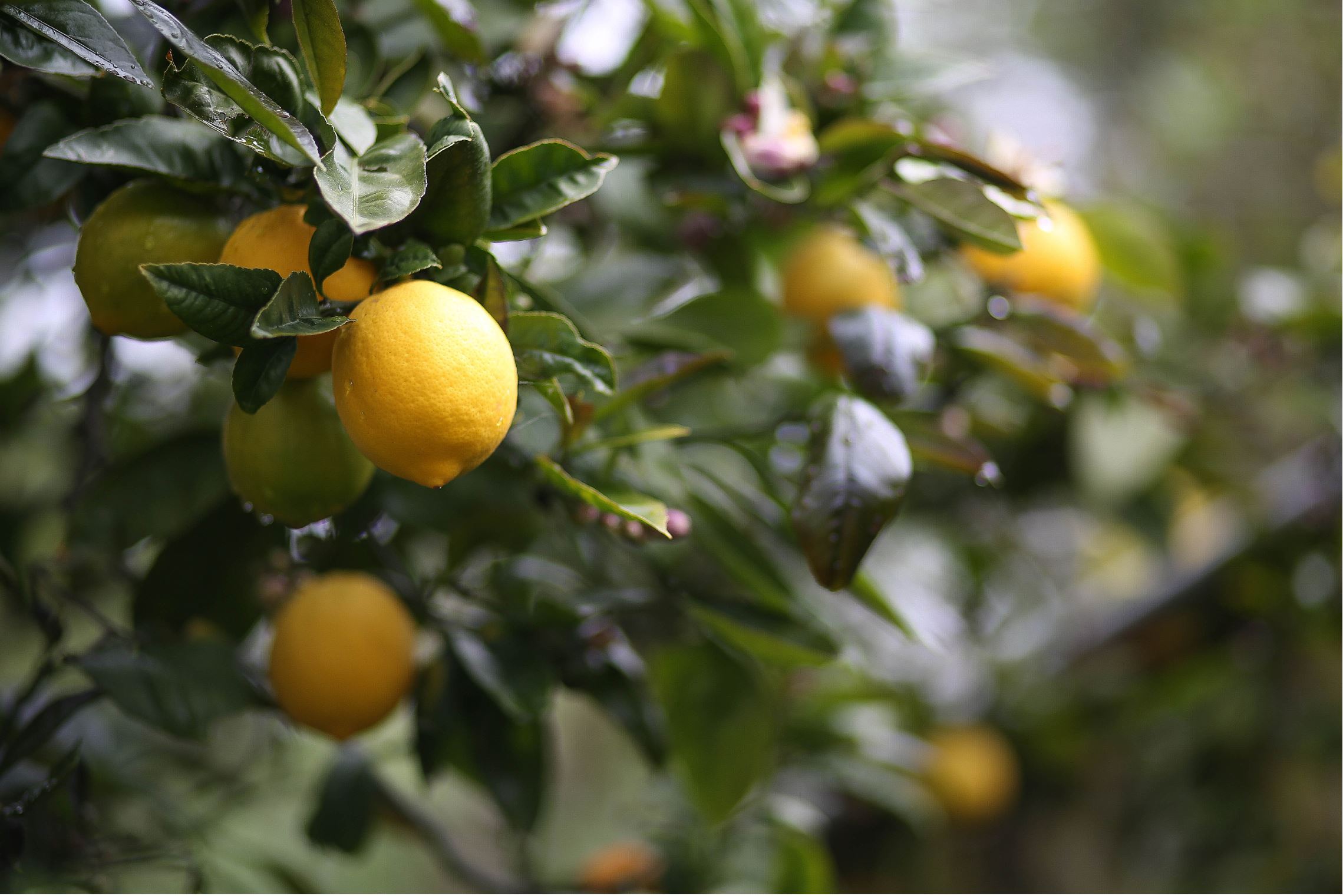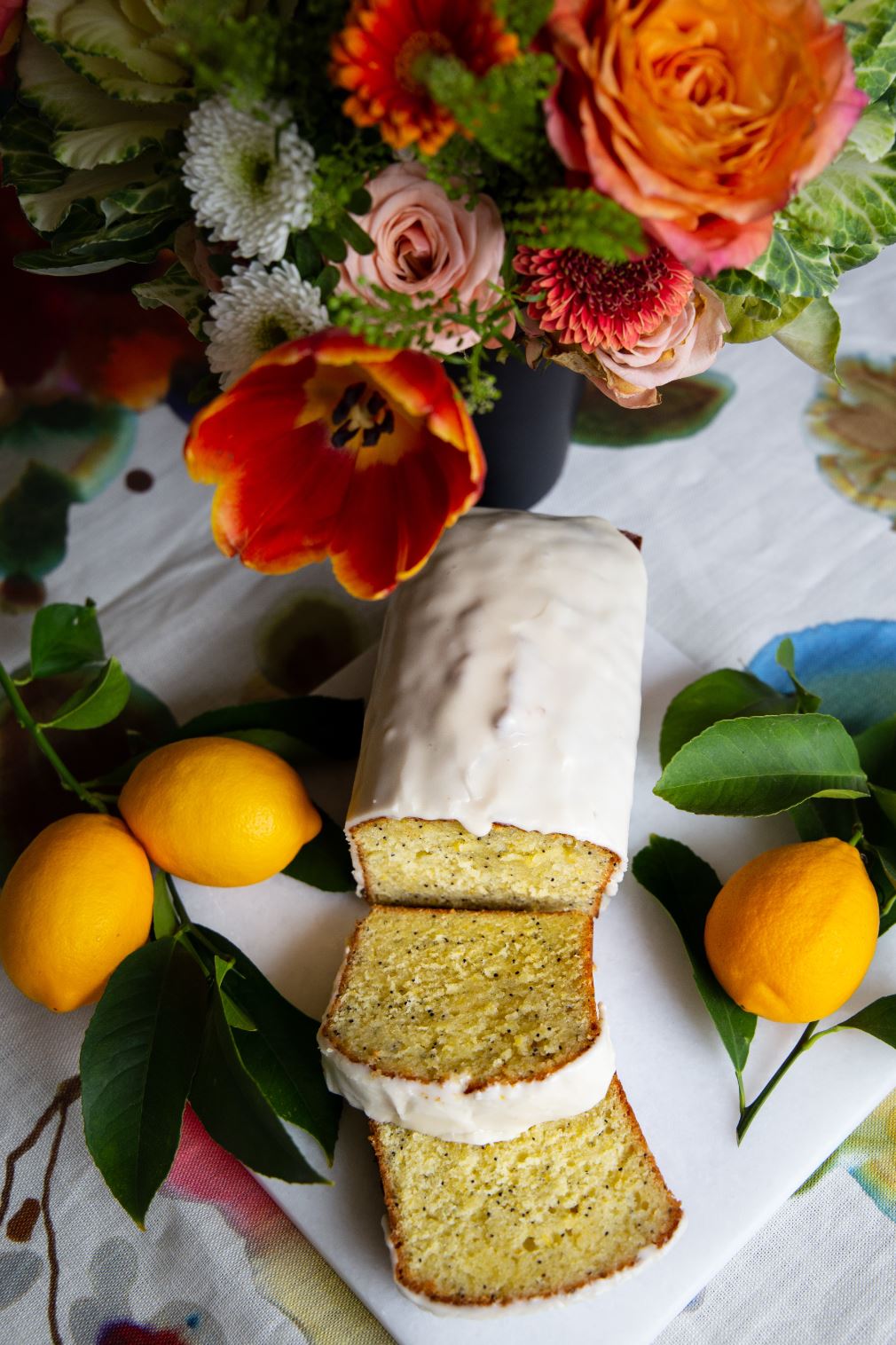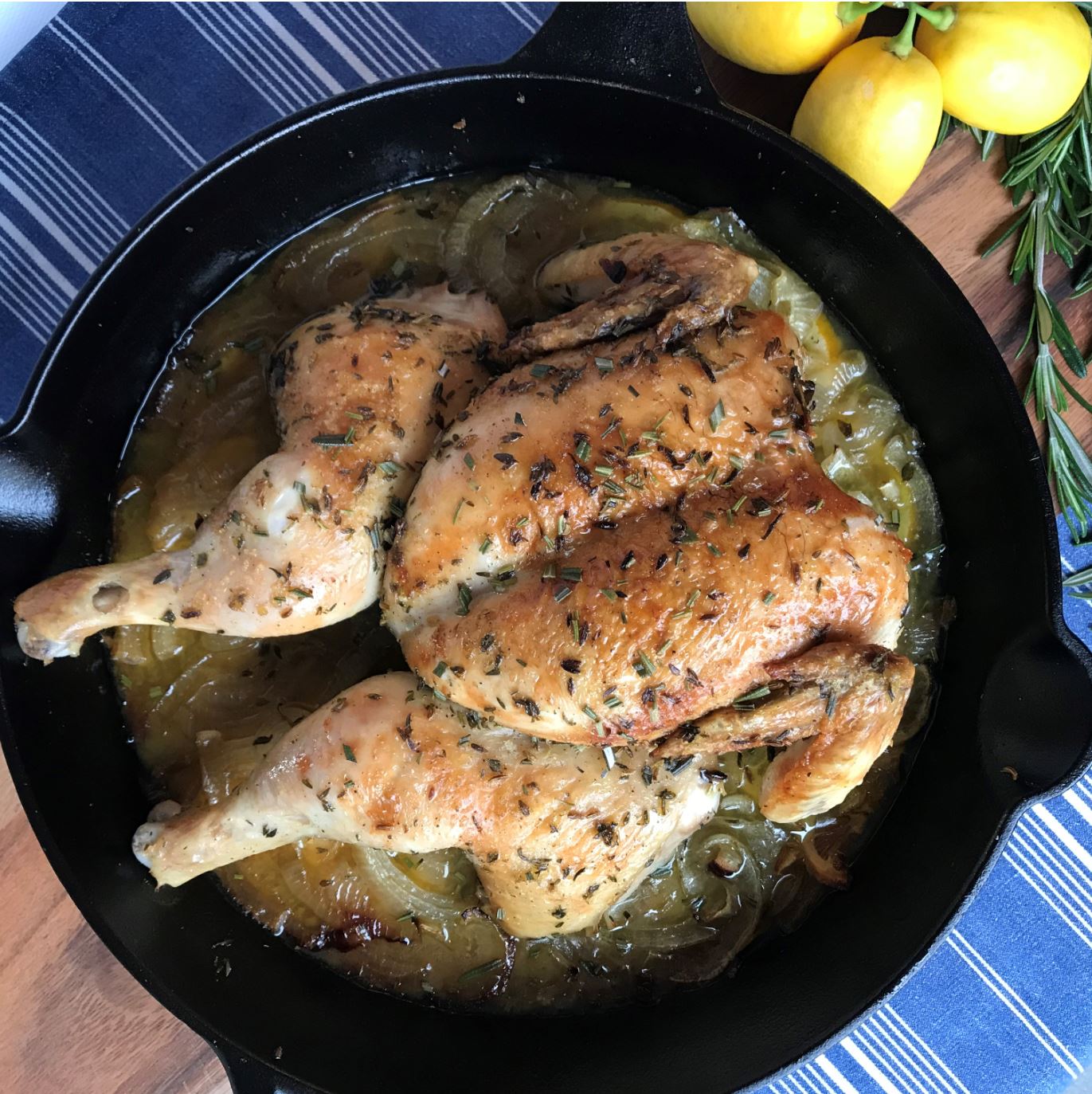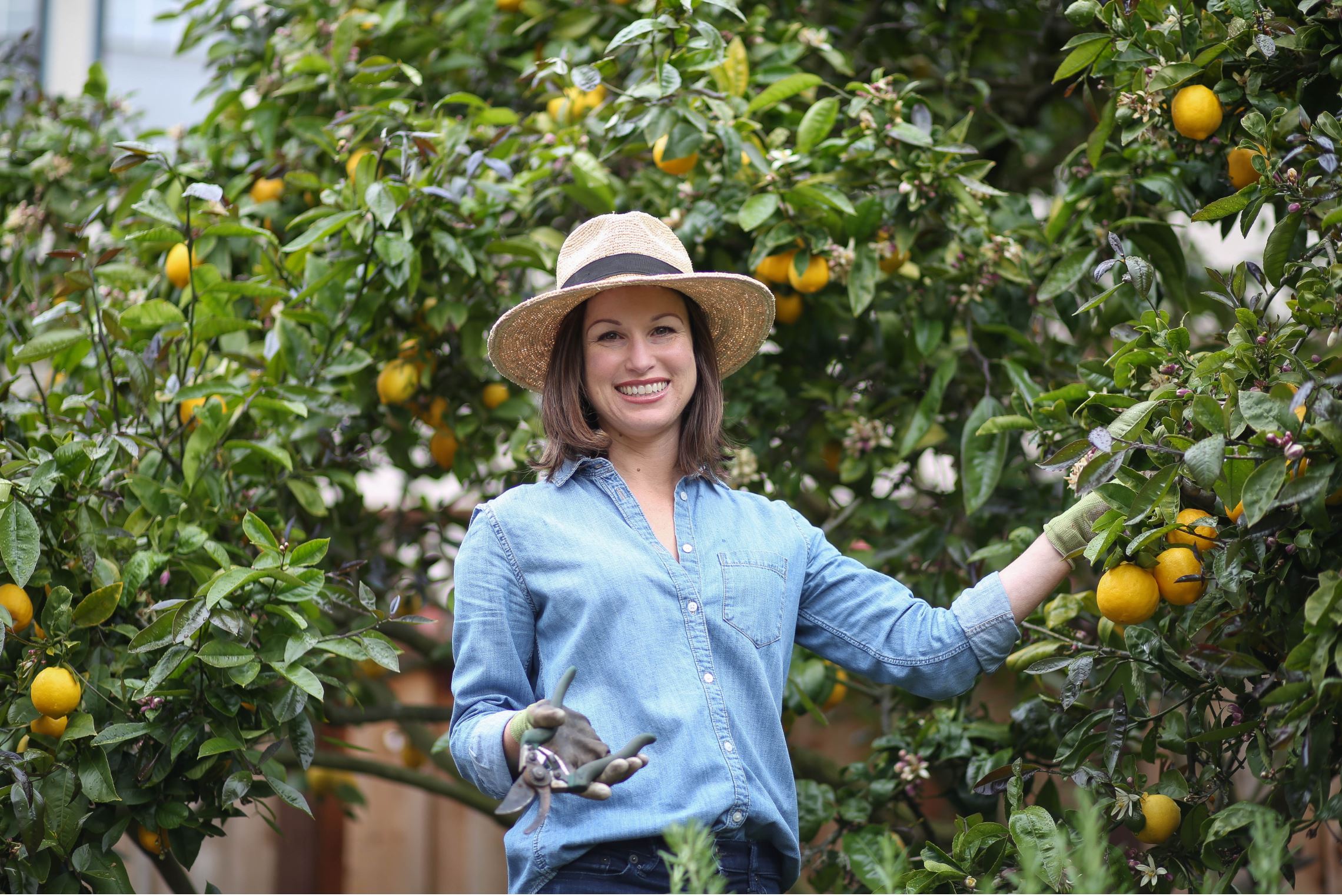As we ‘shelter in place’ during this strange time of COVID-19, I find reassurance in the rhythms of the natural world. Regardless of current events, today is still marks the beginning of spring, a time that is filled with symbols of hope and renewal.
Lemons have a long season here in California, but I always associate their refreshing flavor with springtime. So in celebration of the spring Equinox, I decided to gather up a few recipes that make use of lemons. Cooking can be a wonderful way to lift the spirits, fill the days confined to our homes, and nurture the body and soul.

I recently had the pleasure of meeting Natalie Mize, an incredibly talented home chef. Natalie prepared the meals for the Divine Hustler Retreat that I attended last fall. The food was gorgeous and delicious, and I loved getting to know Natalie over the course of the weekend. I quickly became her biggest fan on Instagram, where she shares beautifully composed photographs of her culinary adventures, displayed with her personal collection of linens and serving platters. Seriously, if you like pretty things, go follow Natalie! Then come back here and read about the recipes she and I came up with, since it turns out we both have mature lemon trees in our yards.

It also turns out that Natalie and I are both big fans of Ina Garten of the Barefoot Contessa. The image above is one of Natalie’s favorite recipes – Ina Garten’s Lemon Cake.
- ½ pound butter
- 2 ½ cups granulated sugar
- 4 extra-large eggs at room temperature
- Lemon zest from 8 lemons
- 3 cups all -purpose flour
- ½ teaspoon baking powder
- ½ teaspoon baking soda
- 1 teaspoon kosher salt
- ¾ freshly squeezed lemon juice
- ¾ cup buttermilk
- 1 teaspoon pure vanilla extract
- 3 tablespoons of poppy seeds (optional)
- 2 cups confectioners’ sugar
- 3 ½ tablespoons freshly squeezed lemon juice
- Preheat oven 350 degrees. Grease, flour and line the bottom of two loaf pans with parchment paper.
- Cream butter, 2 cups sugar and lemon zest for 5 minutes then add eggs one at a time.
- Sift flour, baking powder, baking soda and salt. In another bowl, combine ¼ cup lemon juice, buttermilk and vanilla. Add the flour and buttermilk mixtures alternately to the batter. Divide the batter evenly between the pans. Bake for 45 minutes to 1 hour until cake tester comes out clean.
- Combine ½ cup sugar with ½ cup lemon juice in small saucepan and cook over low heat until the sugar dissolves.
- When the cake is done cool for 10 minutes, invert onto a rack set over a tray, and spoon the lemon syrup over the cakes. Cool completely.

One of my favorite savory recipes by Ina Garten is her recipe for Skillet-Roasted Chicken with Lemon. This is one of the most flavorful chicken dishes I’ve made, and totally manageable for someone who doesn’t quite have Natalie’s culinary skills! I found it in Ina Garten’s book, Cooking for Jeffrey, which is both a cookbook and a very sweet love story.
- 2 teaspoons fresh thyme leaves
- 1 teaspoon whole fennel seeds
- Kosher salt and freshly ground black pepper
- 1/3 cup good olive oil
- 1 lemon, halved and sliced ¼ inch thick
- 1 yellow onion, halved and sliced ¼ inch thick
- 2 large garlic cloves, thinly sliced
- 1 (4-pound) chicken, backbone removed and butterflied
- ½ cup dry white wine, such as Pinot Grigio
- Juice of 1 lemon
- Preheat the oven to 450 degrees.
- Place the thyme, fennel seeds, 1 tablespoon salt, and 1 teaspoon pepper in a mini food processor and process until ground. Pour the olive oil into a small glass measuring cup, stir in the herb mixture, and set aside.
- Distribute the lemon slices in a 12-inch cast-iron skillet and distribute the onion and garlic on top. Place the chicken, skin side down, on top of the onion and brush with about half the oil and herb mixture. Turn the chicken skin side up, pat it dry with paper towels (very important!), and brush it all over with the rest of the oil and herb mixture.
- Roast the chicken for 30 minutes. Pour the wine into the pan (not on the chicken!) and roast for another 10 to 15 minutes, until a meat thermometer inserted into the thickest part of the breast registers 155 to 160 degrees.
- Remove the chicken from the oven, sprinkle it with the lemon juice, cover the skillet tightly with aluminum foil, and allow to rest for 10 to 15 minutes. Cut the chicken into quarters or eighths, sprinkle with salt, and serve hot with the pan juices, cooked lemon, and onion.
- Remove the ends of the lemon, cut in half through the stem ends, and slice thinly crosswise.
- Sometime I sprinkle the chicken with minced fresh rosemary before allowing it to rest.
- Assemble the chicken in the pan and refrigerate for a few hours before roasting!

Now, back to dessert recipes! My son and I recently made this recipe for Lemon Mousse with Lemon Peel Garnish by Flo Braker from the San Francisco Chronicle. It’s a perfectly light and refreshing dessert that can be made ahead of time. We made the Lemon Peel Garnish, but if you’re in a rush, you could use a sprig of mint instead.
- 3 to 4 lemons
- 1/2 cup granulated sugar
- 5 large egg yolks
- 1/2 cup granulated sugar
- 1/2 cup fresh lemon juice
- Finely grated zest of 1 large lemon, at least 1 tablespoon
- 1 pint (2 cups) heavy cream
- Using a serrated or vegetable peeler, cut strips from each lemon and julienne strips. Blanche the strips in boiling water for about 5 minutes. Pour into a sieve, discard the hot water and rinse the strips in cold water. (This process eliminates most of the peels' bitterness.)
- In a small saucepan bring the sugar and 3 tablespoons water to a boil, swirling the pan occasionally until the sugar melts. Simmer the mixture for 1 minute. Add the blanched lemon peel strips to the syrup, and stir to coat them evenly with the syrup. Pour into a sturdy container and refrigerate until serving time.
- Set a sieve over a heatproof bowl and set nearby. Whisk together the egg yolks, sugar, lemon juice, lemon zest and 2 tablespoons water in a 1 1/2-quart heavy saucepan until thoroughly combined. Cook over medium-low heat, whisking constantly, until the mixture thickens slightly and it registers 165° on an instant-read thermometer. Immediately pour this lemon mixture into the sieve, pressing it through with a heat-resistant spatula. Discard the lemon zest that remains in the sieve. Allow the lemon mixture to cool before covering its surface with a sheet of plastic wrap. Refrigerate (up to 2 days) until you're ready to finish the mousse. The lemon mixture thickens as it chills for several hours or overnight. To hasten the chilling, place over an ice-water bath and gently stir occasionally.
- Whip the heavy cream until stiff peaks form. Fold half of the whipped cream into the thickened lemon mixture to lighten it. Whisk the remaining whipped cream in the bowl to thicken the cream more and fold it into the mousse. Divide it among 8 stemmed glasses or bowls and serve immediately, or refrigerate covered with plastic wrap for up to 1 day. Serve garnished with lemon peel.
- This dessert is not too sweet. The subtle lemon flavor shines though, accented by the candied rind. Not surprisingly, a less sweet white wine is needed, though it should be just a touch sweeter than the mousse. Otherwise, a too sweet wine will overwhelm the dessert's delicacy. A German QbA or Kabinett Riesling will have nice citrus notes and the acidity to counter the cream's richness.
- The lemon peel guarantees a sharp lemon flavor from the mousse. The pith on a citrus peel is soft, spongy white tissue that separates the peel from the flesh. It is usually quite bitter, so you want as little of it as possible on the peel. It is worth owning a serrated peeler, which slices so finely that almost no pith remains on the peel.
- To get the most juice out of lemons, warm them in the microwave (medium power) for about 30 seconds, then press or roll them on the counter to release as much juice as possible.
- To produce the most volume when whipping cream, start with cold cream, and a cold bowl and beaters (or whisk attachment).
- After you fold half of the stiffly whipped cream into the lemon-egg mixture, briskly whisk the cream that remains in the bowl to unify any liquid that tends to settle to the bottom of the bowl.
- Serve the mousse elegantly, in stemmed glasses; or casually, in bold-colored ramekins or small bowls. Garnish each serving with a spoonful of candied lemon peel. For an extra treat, accompany the mousse with delicate cookies like almond tuiles or small meringues. No matter how you present lemon mousse, you have a dessert that fits the forecast.
share it
email it